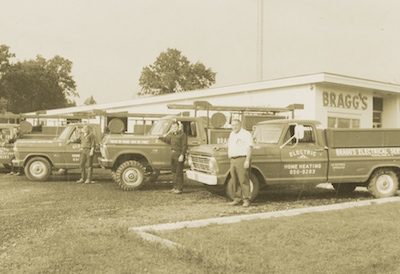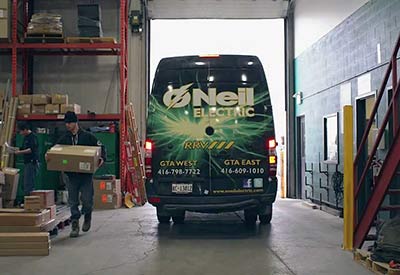Industrial Electrical Product Distribution: A 1960 Perspective

Feb 4, 2019
By Owen Hurst
We often learn how to look forward by first looking back, or at the very least we realize that despite our best efforts we have not truly advanced quite so much as we had thought. Sure, technology is rapidly advancing. That’s beyond question. But what about our approach to selling it? Have we changed that much in the last 20, 40, 60 years? Inevitably there have been advances and changes in marketing, the Internet causing the biggest shift, but many of the concerns and directives that have driven the distribution and marketing of industrial electrical products remain, or at least planted the roots of the concerns of manufacturers and distributors today.
To gain perspective of the perceptions and directions of electrical product distribution in 1960, we turn to Edwin H. Lewis. In 1960 Lewis published “The Distribution of Industrial Electrical Products” in the Journal of Marketing.
To fully define electrical product distribution in 1960, Lewis broke his study into several categories. We will follow his direction and provide his insights on the industry in each of the categories he identified.
The market
When considering the industrial market as a whole in 1960, Lewis identified that the primary users were electrical contractors, industrial, commercial and governmental organizations, and electric utilities. However, it is interesting to note that, while small, the DIY market was identified and making purchases in 1960, although it was but a blip in the overall purchasing of industrial electrical equipment.
Competition in the market occurred primarily in product design and performance, price, and technical services. Secondary to this and identified as only significant “under certain conditions” were sales promotion, product availability and delivery services. “In the sales of electrical apparatus, the reputation of the manufacturer as a producer of high quality, dependable products [is] a factor of overriding importance. Price becomes important when competing products are comparable in all essential respects.”[2]
Customer buying methods
Dependable products were the essential determining factor for buyers, and only after all operating factors had been considered. Lewis identifies that utilities tended to be conservative in their purchasing and that new suppliers had difficulty gaining acceptance unless they had a product required by the utility. Lewis noted that utilities that limited themselves to one or two suppliers for a given product ran a risk in terms of continuous availability and product limitations. Optimally utilities would have had a select number of suppliers for a given product.
Industrials also tended to purchase very carefully, as their primary concern was shutdown or disruption. Primary purchasing from industrials tends to follow along the line of manufacturer, as engineers and maintenance staff preferred to continue with a specific manufacturer if they have had past success with their products.
Construction materials
Electrical contractors, working primarily in the non-residential market, were often limited in their purchasing decisions by specifications written by the architects and engineers who designed the building. Therefore, Lewis identified that electrical contractors bidding on projects were restricted in their product purchasing, even though there may have been some flexibility within the identified specifications.
At this point we reach some confusing and contradictory opinions by Lewis on the best approach to swaying architects and engineers who are determining product specifications. First, he identifies that as architects and engineers have such an influence it is necessary for manufacturers to “devote considerable promotional effort to them in both personal selling and in advertising.”[3] He then goes on to say that “specifications are usually written around the descriptions of products which the engineer knows and trusts. Although the engineer is not likely to be influenced greatly by strong promotional pressure, he is influenced by good performance data.”[4]
In this regard 1960 doesn’t seem all that different than 2018. Yes, it is necessary to wisely target those specifying projects with advertising and promotional campaigns. However, their influence depends largely on the manufacturers’ reputation for providing reliable product.
Original equipment
Original equipment manufacturers (OEM) are purchasers of components to be used in finished products. In 1960 these were primarily identified as manufacturers of motors and motor controls, transformers, ballasts, wire and cable, and wiring devices (harnesses). OEM accounts tend to be large in scale and are often done as bulk orders. Lewis notes that some manufacturers sell the majority of their product to OEMs, which was not surprising in 1960 as electronics and electric household appliances were currently booming and demanding a substantial share of the electrical component market.
In other instances, motor manufacturers developed long-standing arrangements, particularly for companies building large motors. “Where supplier and purchaser have worked together for a long period, the working relations are close, and the supplier becomes almost a department of the OEM.”[5] This is quite an interesting observation by Lewis, and I would be interested to know if a supplier with a long-standing relationship with an OEM would today consider themselves in the manner identified in 1960 by Lewis.
Marketing structure
Lewis identified that in 1960 the market structure was primarily divided into two groupings:
• sales of large apparatus, like those used in utility installations were primarily undertaken directly from the manufacturer, as they often required custom-made equipment. In this case manufacturers often act as the installers and assume some responsibility for the installation and performance of the product.
• smaller equipment, wiring devices and supplies, lighting fixtures and such, which were sold primarily through distributors. Interesting that even in 1960 Lewis notes the term “distributor” is used rather than wholesaler.”[6] In all, the description of the electrical distributor in 1960 doesn’t sound all that different from today: they “sell primarily to electrical contractors and industrial accounts where the company handles its own installations.” They are both small and large companies, and although they have a general description they can be grouped into distributors general-line (what we would call full-line) and specialty-line that tend to specialize sales in a particular area that still meets the overall definition of sales to electrical contractors.
Lewis also notes that at the time there was a rising rend in distributors operating electrical contractor businesses, although this tended to affect the distributor sales as they tended to not want to sell to competitors of their contracting business. So, has opinion really changed that much in 58 years?
Other wholesalers
Today it is no surprise to hear concerns, particularly for smaller companies, about the rise of big box hardware stores that supply electrical supplies at an often discounted rate. But that discussion is not a new one and was identified as a rising concern by Lewis in 1960. Although it may not have been stores such as Home Depot, or even the rising tide of online sales (although I would love to go back to 1960 and see the puzzled face of distributors when using that lingo) distributors were still facing competition from hardware locations. There was also a trend for electrical service establishments to take on the role of a wholesaler, although the trend was rather short lived.
The manufacturers’ representative
Lewis admits that in addition to merchant (hardware) wholesalers there is a key middleman in the distribution of electrical products, namely the manufacturer’s rep. Lewis notes that in 1960 they existed if a manufacturer could not maintain an adequate salesforce, and that reps often represented multiple manufacturers with similar products. I think we can say this is rather unique and that manufacturers that are in competition do not share reps.
Changes in distribution
This section may be the most interesting of Lewis’ article as it looks at the period from 1950 to 1960 and the changes in distribution that occurred in that 10-year period. From 1950 to 1960 Lewis identified that the “general-line, full-service distributor particularly has been under pressure. This pressure has been caused by the increasing severity of price competition, especially on bid business, and the need on the part of both manufacturers and distributors to reduce costs. In addition, manufacturers have not always been satisfied with the job distributors have done and have begun to assume a greater responsibility for some functions formerly performed by the distributor such as warehousing and sales promotion.”[7]
Another change during the period was the rise of manufacturers’ own field stocks, particularly by wire and cable manufacturers. He notes that distributors looked unfavourably at these field stocks, considering them to have the potential to directly compete for market share.
Interestingly Lewis also identifies that in major cities there had arisen a new market for mail-order parts, which he notes may or may not be of premium quality, but prices tended to be low and attractive to contractors. This is eerily reminiscent of online product purchases, which also come with the prospect of low prices and can be of low quality or at times even carry counterfeit certification marks.
And finally, promotional activities rose substantially from 1950 to 1960 among both manufacturers and agents. This at times took the role of training salesmen and direct relationships with users.
“The net effect of these developments has been that the established position of the electrical distributor is challenged by contractors who attempt to buy direct and by agents and manufacturers who ‘go around’ the distributor, take orders from contractors, and then attempt to place the order with some distributor at the lowest possible price.”[8]
Owen Hurst is Managing Editor of Panel Builder & Systems Integrator. Source: Edwin H. Lewis. “The Distribution of Industrial Electrical Equipment,” Journal of Marketing 24 (4) (1960), pp. 23-28
Notes
1. Edwin H. Lewis. “The Distribution of Industrial Electrical Equipment,” Journal of Marketing 24 (4) (1960), pp. 23-28
2. Lewis, p. 23
3. Lewis, p. 24
4. Ibid
5. Ibid
6. Lewis, p. 25
7. Lewis, p. 26
8. Lewis, p. 27











